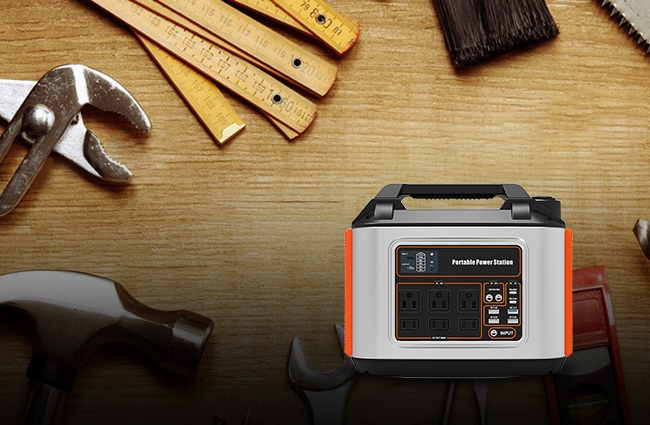Is the traditional power grid meeting your energy needs? Try going off the grid with the help of a portable solar generator and enjoy the freedom of being independent of the grid. Solar portable generators are an excellent source of renewable energy, providing power for various needs while being environmentally friendly. However, to ensure that your solar generator lasts as long as possible and continues to perform at its best, regular maintenance is essential. In the following, we will introduce some key maintenance tips to keep your portable solar generator in tip-top shape.

Importance of Solar Generator:
Portable solar generators are a boon to the modern world. There are certain situations in which we can benefit from a portable solar generator, including using it as a form of emergency power source in your own house or taking it with you to a place where there is limited power or no other source of power.
Portable solar generators are noiseless. So if you need power in a place where other people are present, such as in a camping situation, they won’t be disturbed by the sound of the generator running, and they will be able to focus on what they're doing without the noise of the generator interrupting their concentration.
And this is arguably the most important benefit, these devices do not burn fossil fuels. Fossil fuels can cause damage to the environment and human health, so the idea of not only using 100 watt solar generator or 500 watt solar generator would be a great option.
Maintenance Key Tips For Solar Power Generators:
1. Protecting solar generators from inclement weather:
While many solar generators have waterproof enclosures, it is best to avoid exposing them to any type of moisture or inclement weather. This is because even the toughest, most reliable waterproof devices have their limitations, and prolonged exposure to water or snow can still cause damage to their internal components.
It's best to play it safe and treat your portable solar generator as non-waterproof. This means avoiding exposing it to water, snow, or any other type of moisture. If your generator accidentally comes into contact with water, don't worry; it may still work fine. However, it's best to avoid this situation as much as possible to ensure the longevity of your equipment.
2. Transport the generator with care and avoid physical damage:
These generators are lightweight, easy to carry, and can easily be damaged if dropped on the ground. Falling from a height or onto a hard surface can cause serious damage to internal components, rendering them unusable. If you accidentally drop the generator, please check for any damage immediately before using it again.
In addition, when transporting your portable generator, please securely secure it in your vehicle to prevent it from rolling and being damaged by other items. Avoid placing the phone in a place that is prone to dropping and damage.
3. Use the generator within the recommended power range:
When using solar generators, they should be used within their recommended power range. This is the maximum power that the generator is designed to handle, exceeding it will lead to machine degradation.
To determine the recommended power capacity of the generator, please refer to the manufacturer's manual or specifications. It will let you know the maximum output power that a portable solar power generator can handle. If you are unsure how much electricity you need to complete a specific task, it is best to choose a portable solar generator with a higher power than you think you need.
4. Find any loose connections:
The next important thing to check is the connection between the socket and the electronic device. Loose connections may cause power transmission issues, leading to poor or no functioning of your device. To avoid this issue, take some time to check the connection every once in a while to ensure everything is safe. You can do this by removing any electronic devices currently plugged into the generator. Next, check the connections to ensure they are tight and secure. If any of them become loose, simply tighten them manually.

Proper Storage For Portable Solar Generator:
- The first thing to ensure proper storage of your portable power station is to ensure the unit itself is turned OFF. This will help prevent any discharge or damage to the battery and ensure that it's ready to go when you need it.
- The next factor to consider is humidity. High levels of humidity can lead to moisture buildup and potential damage to generator components. Therefore, it is important to find a dry place to store your generator. A cool, dry basement or climate-controlled garage is an excellent choice for storing your solar generator!
- Third, You should avoid storing the generator directly in sunlight, as this may cause the battery to overheat and damage internal components. Instead, choose a place with shadows or cover.
- Finally, ensure that the storage area is free of debris and dust, as they can clog the ventilation system of the generator and cause it to overheat. A clean and orderly storage area can also prevent damage caused by accidental collisions or falls.
Maintaining a solar portable generator involves regular cleaning, inspections, and proper storage. By following these guidelines, you can ensure your generator remains efficient and reliable for years to come. Remember, a well-maintained solar generator not only provides uninterrupted power but also contributes to a greener and more sustainable future. If you have further questions about how to maintain your portable solar generator, reach out to our team here at Inverter Store. We would love to hear from you!
